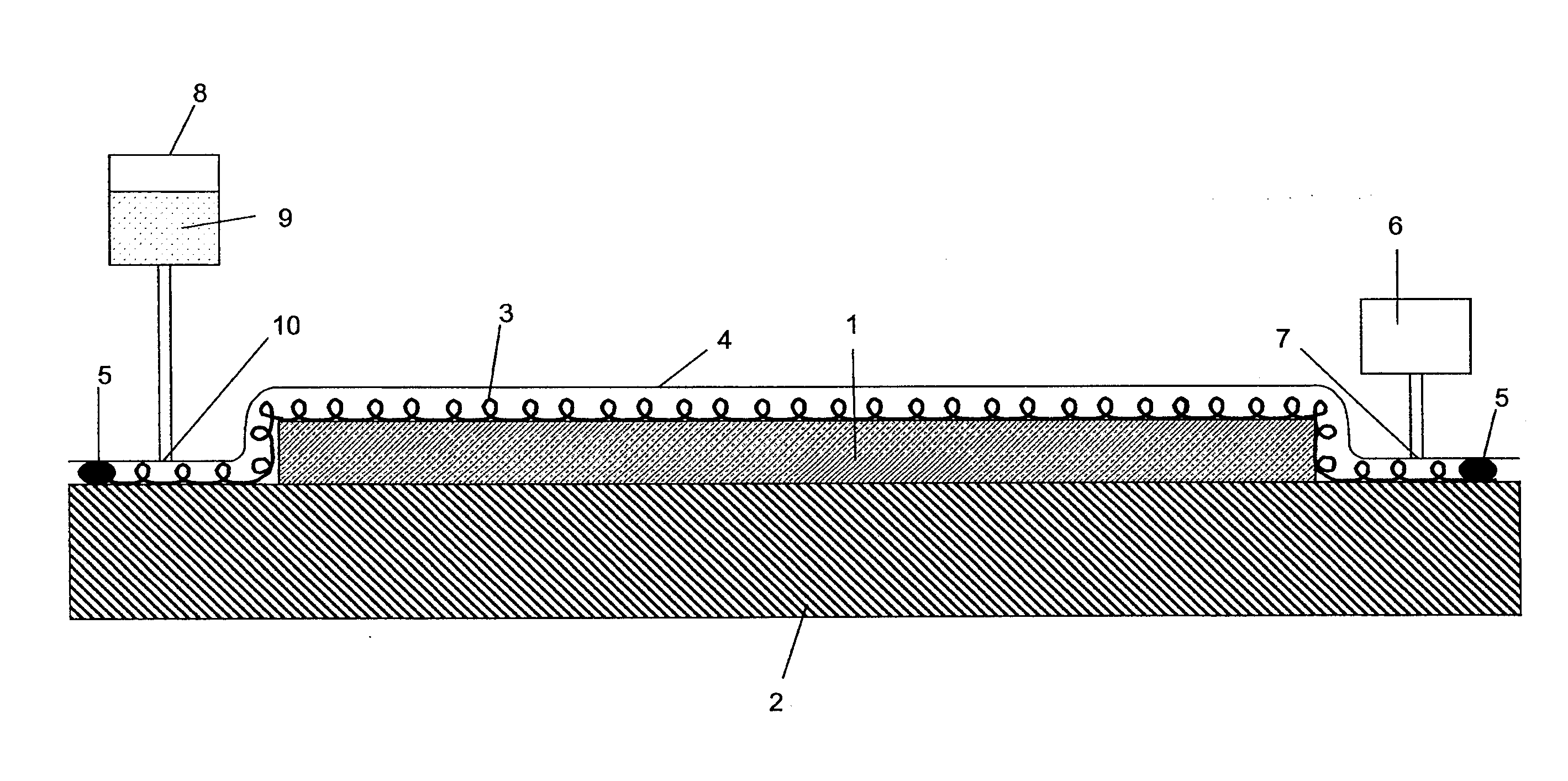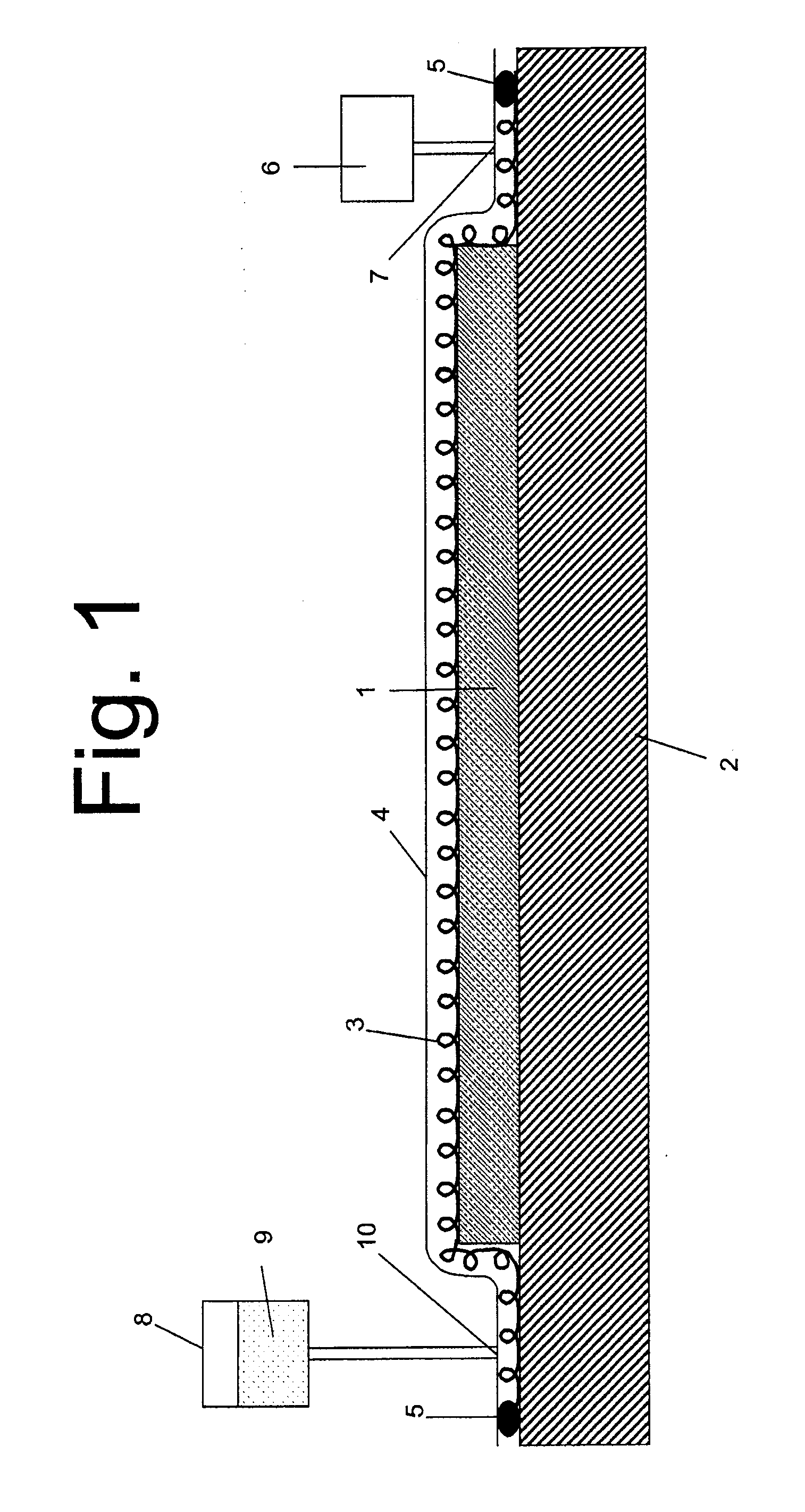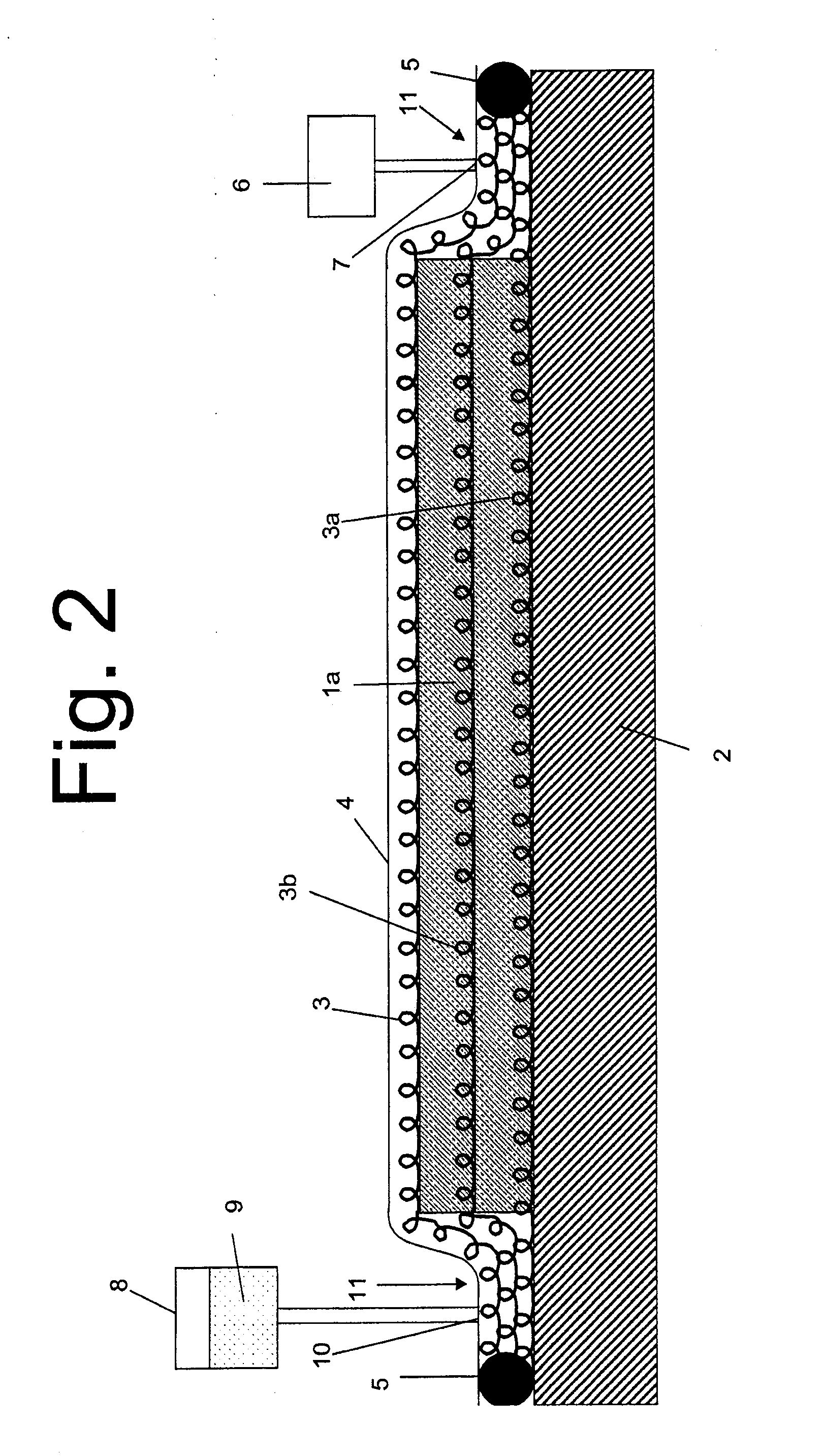Method of processing a composite material
a composite material and processing method technology, applied in the field of composite material processing methods and equipment, can solve the problems of difficult or impossible to transport resin into reinforcement materials under vacuum pressure, resin can be quite brittle,
- Summary
- Abstract
- Description
- Claims
- Application Information
AI Technical Summary
Benefits of technology
Problems solved by technology
Method used
Image
Examples
Embodiment Construction
)
[0033]FIG. 1 shows a first variant of a method of manufacturing a composite material. A pre-form 1 is laid onto a single-sided mould tool 2. The pre-form 1 comprises a stack of layers of dry carbon-fibre, or any other suitable reinforcement material. A resin distribution layer 3 is then laid onto the pre-form 1.
[0034]The layer 3 is formed from a knitted or woven fabric of monofilament fibres, the fibres being formed from a specific grade of functionally reactive polysulphone (PSu), polyethersulphone (PES), or any other suitable thermoplastic material. An example of a suitable polymer is Radel A105P, available from Solvay Advanced Polymers. Typically the material is either hydroxy, amine or carboxy functionalised.
[0035]The fibres are typically 0.1-0.2 mm in diameter, the weight of the layer is typically of the order of 120 gsm, and the thickness of the layer is typically in the range of 1.6 mm to 1.8 mm.
[0036]A suitable fabric is “N1031” available from Newbury Engineered Textiles Li...
PUM
| Property | Measurement | Unit |
|---|---|---|
| thickness | aaaaa | aaaaa |
| pressure | aaaaa | aaaaa |
| temperature | aaaaa | aaaaa |
Abstract
Description
Claims
Application Information
 Login to View More
Login to View More - R&D
- Intellectual Property
- Life Sciences
- Materials
- Tech Scout
- Unparalleled Data Quality
- Higher Quality Content
- 60% Fewer Hallucinations
Browse by: Latest US Patents, China's latest patents, Technical Efficacy Thesaurus, Application Domain, Technology Topic, Popular Technical Reports.
© 2025 PatSnap. All rights reserved.Legal|Privacy policy|Modern Slavery Act Transparency Statement|Sitemap|About US| Contact US: help@patsnap.com



